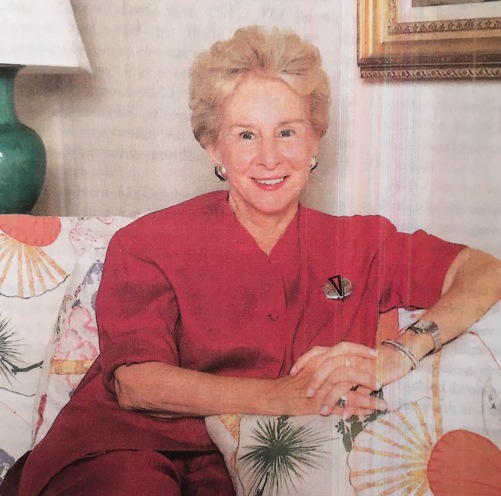
Mrs. Leonor Gonzalez (circa 1999). Photograph by Michael Forester
THE FOLLOWING ARE REMARKS MADE BY MRS. LEONOR GONZALEZ TO AN OVERFLOW GATHERING AT THE MOORINGS’ YACHT CLUB SPEAKER SERIES ON MONDAY, MARCH 23, 2009.
When Don Russell asked me to talk about the early days of the development of The Moorings, I told him I knew very little about those days. At the time, I was very busy teaching at St. Edward’s and hardly went to office, which was then situated at the corner of Ocean Drive and Beachland Boulevard, where the law firm of Stewart and Evans is now.
Only someone close to Jorge who had been with him during those early days could fill in that gap for you. So who better than the company attorney, Dorothy Hudson?
I WILL tell you that when Jorge hired Dorothy and introduced me to her, my only comment was: Jorge, are you out of your mind? This woman is practically a teenager, just out of law school. With all the problems this company has, how could you hire such a person?”
Jorge’s answer was, “I think she is very bright; she will do the job.”
This was clearly an understatement. Dorothy was a stellar attorney for The Moorings and saw the company through very trying times. After my comments, she will tell you what some of those days were like.
What I can tell you is how The Moorings came to be.
In 1950, when we were all living in Cuba, my father (Julio Lobo) went to have lunch with an American friend of his, Sylvia Kaffenburg. Her dining room overlooked a gorgeous garden which must have impressed my father. Gardens were typically so lush and exuberant in Cuba that they were usually left mostly as a jungle. This garden, however, had a very specific design, and my father asked his friend who had landscaped it for her. Mrs. Kaffenburg replied that there was a designer in Ft. Lauderdale, Florida called Milton Link, and she gave my father his number.
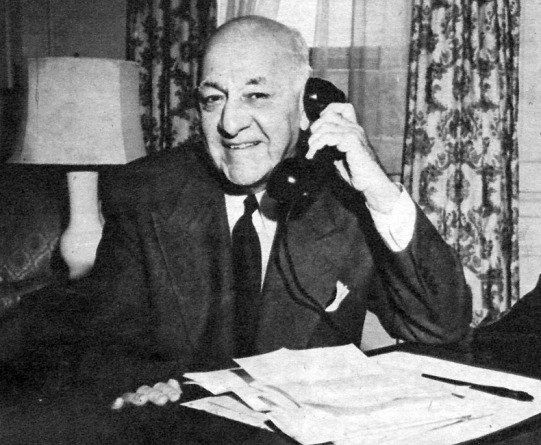
Julio Lobo
The next thing I knew, Link was in Havana; my father had commissioned him to landscape his two favorite sugar plantations, Tinguaro and Pilar, which he used to entertain local and international guests. It was a happy relationship and the gardens turned out to be absolutely stunning.
In 1953, Link, who was eager to make the transition from a landscape architect to a developer, called my father about a piece of land in Naples, Florida, and enticed my father to buy it and have him, Milton, develop it. They named this property The Moorings.
My father visited the property several times and liked what he saw and what Link was doing there. The project was very successful.
Several years later, in 1956, Link called my father again and spoke to him about 550 acres of land in Vero Beach, Florida, which, he said, would be valuable 40 years hence. Link wanted to develop this land too.
Since the Naples project had gone very well, my father decided to buy this land in Vero Beach. However, by this time, Fidel Castro had already landed in Cuba (on one of my father’s properties, as so it happened) and times were turbulent in Havana; there were all kinds of strikes, acts of terrorism, etc, and my father was very busy with his business enterprises. So he had never visited Vero Beach and bought the land, site unseen.
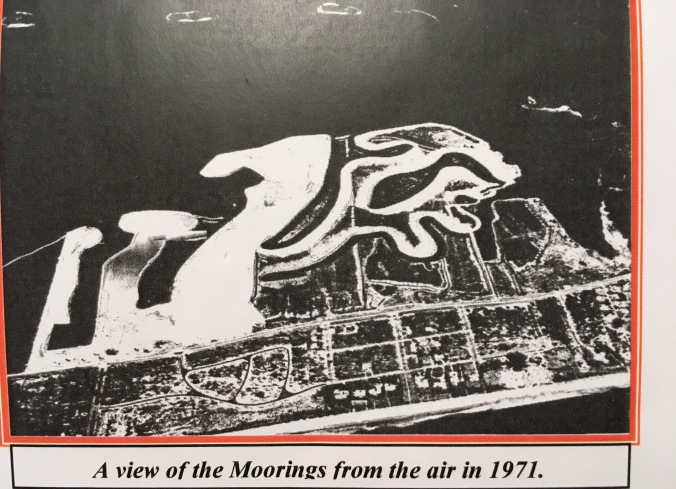
Again, he put Link in charge of developing it, and again he named it The Moorings.
This Moorings was a wedding gift to my sister and to me. We were both dismayed to say the least, having heard that the property was a swamp full of mosquitoes, snakes, rats and alligators. We had hoped for something considerably more glamourous.
In the following years, we forgot about this gift we didn’t like.
After our marriage in 1957, Jorge and I lived in London for a year where Jorge worked at a Spanish bank, returning to Cuba in December 1958 for the birth of our son, Boris.
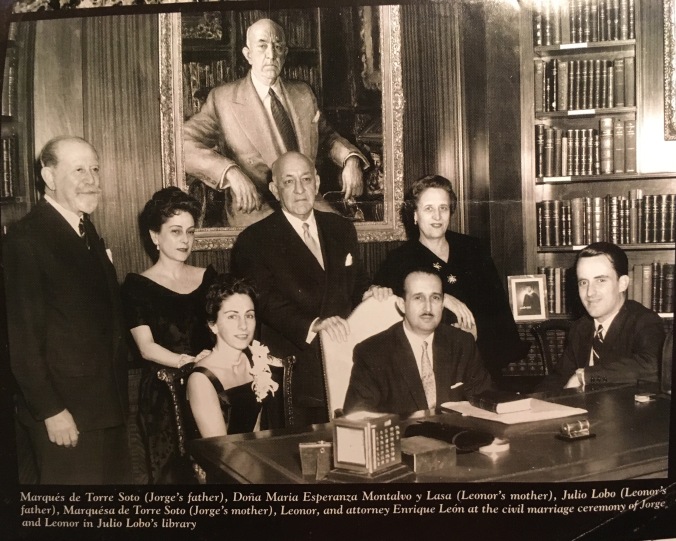
On the first of January, 1959, Fidel Castro took over the island, and then too many things happened then to mention here. I will only say that Jorge and I started going to Miami every weekend with suitcases stuffed with valuables – they were not checking suitcases at that time – and we knew the end was coming.
In October 1960, with a stroke of his pen, Che Guevara, President of the National Bank of Cuba, expropriated every single piece of property owned by every single person on the island. My father left Havana the next day, and Jorge, Boris and I went into hiding, managing to board the last plane leaving the island that week. We little cared whether it was going to Patagonia or Timbuktu, but as it happened it landed in Ft. Lauderdale, Florida.
My family initially settled in Manhattan, where my father had an office, but after the Bay of Pigs, it was clear Fidel was going to remain in power for some time to come. So the whole family – my parents, too – moved to Spain. However, the trauma of the Cuban Revolution and the expropriation of all his worldly goods had affected my father gravely; he began losing mental acuity, and became increasingly out of touch. He was not, therefore, supervising what was going on at The Moorings.
As it happened though, my mother’s brother, Eduardo, was working at Gulf and Western in Vero Beach at the time. He alerted my mother and her husband in Madrid that The Moorings was not doing well and that Jorge should come down and take a look. Something was definitely wrong with the way the company was being run.
I will not go into further details about this; I will just say that my Uncle Eduardo convinced Jorge to take six months or a year off from his job in Madrid (Jorge had opened a branch office for Fahnstock and Company there) and bring us both, Boris and me, to Vero Beach to look for another manager.
Jorge took little convincing – he had never liked big cities and he liked a challenge. Boris, too, loved the outdoors. It was much harder to convince ME. I was very much a city girl then, and The Moorings, when I arrived in the fall of 1970, was a lunar landscape: there were only a couple of spec houses and the Billows on the property, with its residents our only neighbors within five miles.
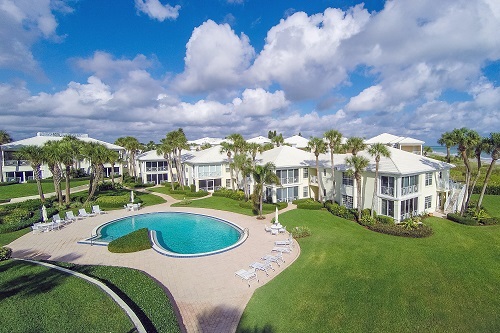
The Billows
To say I was dismayed is to put it mildly. One the beach side, there was no Riverside Theatre, no museum, nothing, except the Ocean Grill, the Driftwood, Cory’s Pharmacy, and a scattering of small shops. Yes, there was Riomar and the Riomar Club. But from the club to The Moorings, there was only brush; A1A was a one-lane highway which didn’t matter to me, since I didn’t know how to drive. What did matter was that I was literally stuck in the boondocks.
I often remember telling Jorge: Had I known that the best years of my life would have been spent in this Godforsaken development, I would have stayed home with Fidel Castro. I think, at the time, that Jorge would dearly have welcomed it. I used to go out to the anchor and cry, hundreds of blackbirds squawking above.
But Jorge quickly applied himself to beautifying this lunar landscape. Tremendously interested in landscaping, he struck a deal with Roy Chapin, who was beginning to develop John’s Island for his father-in-law, Llwyd Ecclestone. Nearly every tree you see on The Moorings today was brought over from John’s Island where Roy was taking them out in order to make room for houses.
It was not easy selling Moorings lots in the early 1970’s. One day Jorge decided to see his competitor, Llwyd Ecclestone. He said, “Mr. Ecclestone, I need your advice. You have been very successful: Tell me, what should I do? All Mr. Eccleston told him was, double the price of all your lots.” Jorge did and The Moorings took off.
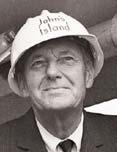
Llwyd Ecclestone
I might add, too, that in 1970 Jorge had the foresight to sell some acres of the land to St. Edward’s Upper School. And then in the spring of 1971 Peter Benedict, then headmaster of the school offered me a job teaching English to St. Edward’s juniors. I recall seeing some of my students coming to school in their motorboats from west of town. It was all very rural, very pastoral. Friends held armadillo races in their back yards, if you can believe it. Most importantly, my association with the school was a real turning point for me; through my students and their parents, I became more interested in the town.
Later Jean Armstrong got me involved in what was then the Center for the Arts, now the Vero Beach Museum of Arts, and in 1978, I resigned from St. Ed’s to dedicate myself full time to the museum.
What else can I say? Here I am 40 years later.
Through the years, Jorge and I met wonderful people, made wonderful friends, and our son, Boris, decided to make Vero Beach his home too.
There is no question I consider myself very, very lucky to be living here, and of course will never, ever, move anywhere else.
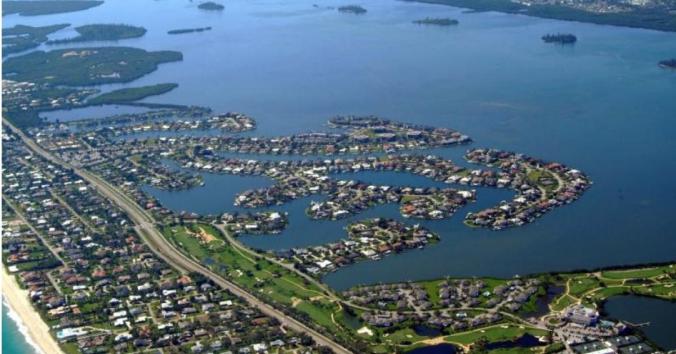
The Moorings Today
Publishers Note: Mrs. Gonzalez’ remarks were printed in the April 2009 issue of The Mooring’s newsletter, entitled The Moorings’ Breeze.
The newsletter was found in keepsakes on The Moorings kept by Mrs. Barbara Wynne Secor, the publisher’s mother-in-law, who died on September 3, 2017; three months’ shy of her 99th birthday. Barbara, who we referred to as “Ma,” lived at Regency Park in Vero Beach, however, previously spent many seasons living at The Billows, with her husband William J. “Dub” Secor, who pre-deceased her.
Once again, The Billows was the first condominium unit built at The Moorings.
For a more in-depth read on Mrs. Gonzalez’s father, Julio Lobo, please read: “The Sugar King of Havana. The rise and fall of Julio Lobo, Cuba’s last Tycoon.” John Paul Rathbone, the son of a Cuban exile recounts the remarkable and contradictory life of famed sugar baron Julio Lobo, the richest man in prerevolutionary Cuba.
I remember riding around that piece of riverfront with Johnny Tuerk and Billy McMaster in 1966. Mrs Langdale,Amy Pomeroys nurse used to fish there. Mrs. Pomeroy’s son in law was Robert Donovan. He wrote PT109. They were a great family! I named our daughter Amy after Amy Pomeroy. She lived at the end of St. Christopher Lane by the “wishbone Tree”. Shirley Booth..Hazel owned the lot next door. South. Great memories of those last days of childhood.
LikeLike
Pingback: Vero Beach…Then & Now ~ By Otis G. Pike | Vero Communiqué